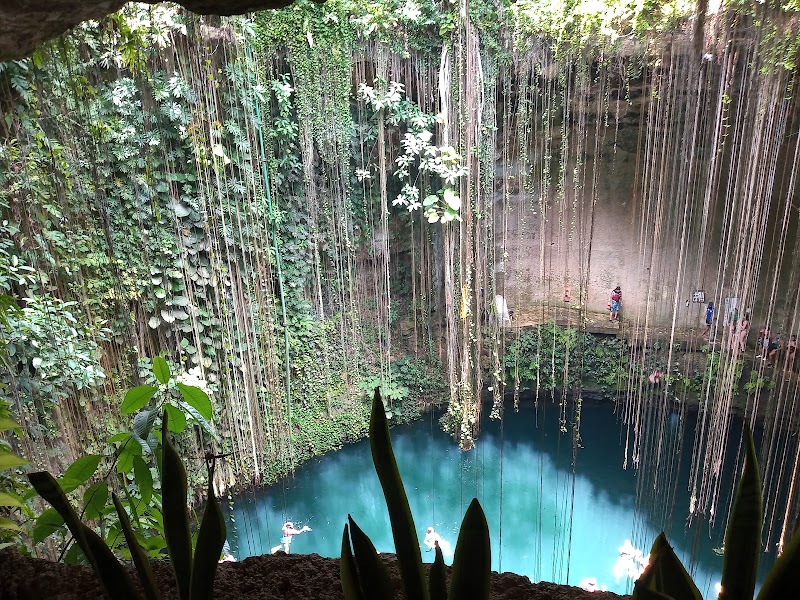Exploring Attractions Near Chichén-Itzá: Your Ultimate Outdoor Adventure Gateway
Explore the adventurous side of Chichén-Itzá with nearby attractions that take you beyond the ancient ruins. Discover hikes, cenotes, and cultural tours in Yucatan’s vibrant natural landscape, perfect for outdoor enthusiasts eager to dive into history and nature.
Stay Hydrated
Carry at least 2 liters of water when hiking near Chichén-Itzá to handle the humid tropical conditions and avoid dehydration.
Wear sturdy footwear
Choose hiking shoes with good traction for navigating limestone trails and uneven jungle terrain safely.
Start early
Morning hikes beat the heat and bring softer lighting conditions, making exploration more comfortable and photography more rewarding.
Protect against insects
Apply insect repellent and wear long sleeves during dawn and dusk to avoid mosquito bites in forested areas.
Exploring Attractions Near Chichén-Itzá: Your Ultimate Outdoor Adventure Gateway
Discover Top Attractions Near Chichén-Itzá, Yucatan
Just a stone’s throw from the iconic Mayan ruins of Chichén-Itzá lies a wealth of attractions waiting to be explored. This vibrant region of Yucatan offers not only remarkable archaeological sites but also diverse outdoor adventures that invite you to engage directly with its natural and cultural landscape.
Visitors to Chichén-Itzá often aim to witness the famous Pyramid of Kukulcán, but beyond this marvel, the surrounding area reveals cenotes, ancient ruins, and dense forest trails that challenge and inspire alike. The region combines a rich historical backdrop with hands-on exploration—perfect for outdoor enthusiasts seeking active experiences grounded in the local heritage.
Hiking through forested paths near Chichén-Itzá brings you face-to-face with rugged terrain shaped by limestone and tropical greenery. Trails vary from easy walks around cenote edges to moderate hikes weaving through jungle that demand sturdy footwear and good hydration. These routes let you encounter wildlife such as colorful birds and elusive iguanas, whose presence adds life and motion to the surroundings.
Planning your visit means considering the Yucatan’s climate—dry months between November and April provide optimal conditions, while the summer rains encourage a vividly alive landscape but also call for layered waterproof gear. Early morning visits to the sites reward you with cooler temperatures and softer light, enhancing both the adventure and photography possibilities.
Search keywords essential for planning your trip include terms like "Chichén-Itzá attractions," "Yucatan cenote tours," "Mayan ruins adventure," and "outdoor activities near Chichén-Itzá." These focus points connect you with tours, hiking routes, and cultural experiences that get you moving through the region's storied environment.
This area is more than a passive sightseeing destination. It challenges you to explore actively—walking, diving, and climbing to discover its fiercely vibrant history and nature. Prepare with practical tips: bring water, wear suitable shoes, and schedule time for multiple excursions. The balance of adventure and cultural immersion makes the surroundings of Chichén-Itzá a must-experience hub for the pragmatic outdoor traveler.
Nearby trips & excursions:
- Guided Cenote Diving and Snorkeling
- Chichén-Itzá Sunset Hiking Tours
- Valladolid Day Trip (Colonial Town & Ecotourism)
- Hacienda and Jungle Kayaking Adventures
Each offers a chance to stretch beyond the archeological marvels and dive into active exploration that forms the essence of Yucatan’s outdoor appeal near Chichén-Itzá.
Nearby Trips
All Adventures
Boat Charters
Water Activities
Adventures near Valladolid
Discover the unique and memorable adventures that make Valladolid special.
Frequently Asked Questions
What is the best time of day to visit attractions near Chichén-Itzá?
Early mornings are ideal, offering cooler temperatures and fewer crowds. The soft morning light enhances the natural beauty, perfect for photography and wildlife spotting.
Are there guided tours available for hikes and cenote visits?
Yes, local guides provide experienced tours that highlight cultural history, environmental details, and safe routes, enriching your outdoor experience.
What wildlife can I expect to see around Chichén-Itzá?
Look out for tropical birds such as motmots, parrots, and toucans, as well as reptiles like iguanas and occasional bats near cenotes.
Is it safe to swim in the cenotes near Chichén-Itzá?
Many cenotes are safe for swimming with clear, fresh water. Always check local guidelines and swim in designated areas supervised by guides.
What should I wear for outdoor activities around Chichén-Itzá?
Wear lightweight, breathable clothing, sturdy hiking shoes, a hat for sun protection, and bring insect repellent along with sunscreen.
Are there any lesser-known viewpoints or quiet spots near the ruins?
Yes, spots like the nearby lesser-explored ruins of Yaxunah and surrounding forest trails offer peaceful views away from the main tourist paths.
Recommended Gear
Hydration pack or water bottles
Crucial for maintaining hydration on hot, humid days and longer trail stretches.
Hiking shoes with good grip
Protects feet and prevents slips on limestone rubble and forest trails.
Light rain jacket
Helpful during sudden tropical showers while keeping you dry without overheating.
Sunscreen and insect repellent
Protects skin from sun damage and insect bites that can be common near water and forested areas.
Local Insights
Hidden Gems
- "Cenote Ik Kil – natural sinkhole with crystal clear swimming waters"
- "Yaxunah Mayan ruins – smaller and less crowded archaeological site"
- "Local forest trails – quiet paths with native flora and fauna"
Wildlife
- "Motmots – colorful birds often heard before seen"
- "Iguanas sunning on rocks near paths"
- "Bats that inhabit dark cave-like cenotes"
History
"Chichén-Itzá was a major ceremonial center for the Mayan civilization and later a melting pot of Toltec influences, visible in its diverse architectural styles."
